-
 Bitcoin
Bitcoin $102,775.0532
3.21% -
 Ethereum
Ethereum $2,329.3928
20.41% -
 Tether USDt
Tether USDt $1.0001
-0.02% -
 XRP
XRP $2.3584
7.05% -
 BNB
BNB $631.0132
2.36% -
 Solana
Solana $164.9678
7.92% -
 USDC
USDC $0.9999
0.00% -
 Dogecoin
Dogecoin $0.2040
11.51% -
 Cardano
Cardano $0.7832
9.58% -
 TRON
TRON $0.2590
3.36% -
 Sui
Sui $3.9252
6.00% -
 Chainlink
Chainlink $15.9843
8.02% -
 Avalanche
Avalanche $23.1174
9.77% -
 Stellar
Stellar $0.2998
10.20% -
 Shiba Inu
Shiba Inu $0.0...01499
11.60% -
 Hedera
Hedera $0.1997
7.33% -
 Bitcoin Cash
Bitcoin Cash $420.9433
1.83% -
 Hyperliquid
Hyperliquid $24.5473
13.18% -
 Toncoin
Toncoin $3.2470
4.13% -
 UNUS SED LEO
UNUS SED LEO $8.7533
-0.42% -
 Litecoin
Litecoin $98.2086
6.84% -
 Polkadot
Polkadot $4.5824
7.84% -
 Monero
Monero $303.9445
4.18% -
 Pepe
Pepe $0.0...01329
44.61% -
 Dai
Dai $1.0001
-0.01% -
 Bitget Token
Bitget Token $4.5250
4.82% -
 Pi
Pi $0.7326
17.63% -
 Ethena USDe
Ethena USDe $1.0001
-0.03% -
 Uniswap
Uniswap $6.3357
21.74% -
 Bittensor
Bittensor $431.7557
6.77%
How to synchronize blockchain data?
When synchronizing blockchain data, selecting the most suitable method (full, pruned, or light node synchronization) is crucial to meet project requirements for security, storage efficiency, and synchronization speed.
Feb 21, 2025 at 08:07 am
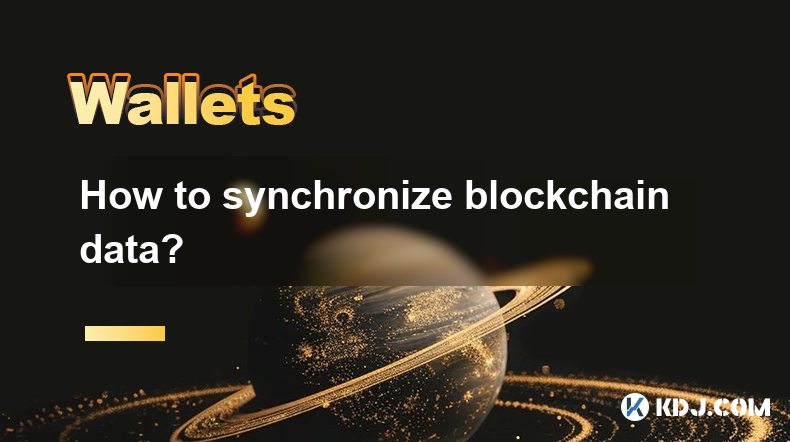
Key Points:
- Choose the Right Blockchain Synchronization Method: Understand the different methods and their suitability for your project, such as full node synchronization, pruned node synchronization, and light node synchronization.
- Set Up a Node to Synchronize the Blockchain: Configure a full node, such as Bitcoin Core, Ethereum Geth, or other node software specific to your chosen blockchain.
- Monitor the Synchronization Process: Track the progress of the synchronization and identify any potential issues.
- Handle Blockchain Forks: Understand how to handle blockchain forks and decide which branch to follow based on your project's requirements.
- Maintain Synchronized Nodes: Ensure that your nodes remain synchronized to keep up with the latest blockchain data.
How to Synchronize Blockchain Data
1. Choose the Right Blockchain Synchronization Method
There are three primary blockchain synchronization methods:
- Full Node Synchronization: Downloads and stores the complete blockchain, ensuring full validation of all transactions. This is the most secure method but requires significant storage and processing power.
- Pruned Node Synchronization: Retains only a portion of the blockchain data, typically the most recent, to reduce storage requirements. While faster and more efficient, it compromises security as some past transactions are not stored.
- Light Node Synchronization: Connects to a full node to access the blockchain data without downloading and storing it locally. This is the fastest and most lightweight option, but it relies on trust in the full node.
2. Set Up a Node to Synchronize the Blockchain
To set up a blockchain node, follow these steps:
- Download the node software for your chosen blockchain.
- Run the node software and specify the blockchain network parameters.
- Allow the node to download the blockchain data by syncing with other nodes.
3. Monitor the Synchronization Process
Use monitoring tools or commands to track the synchronization progress:
- Check the node's logs or console output for synchronization status updates.
- Use command-line tools such as "getblockchaininfo" for Bitcoin Core or "eth.syncing" for Ethereum Geth to retrieve the current synchronization status.
4. Handle Blockchain Forks
If the blockchain experiences a fork, follow these steps:
- Soft Fork: A backward-compatible change that allows both branches to coexist. Choose the branch that aligns with your project's objectives.
- Hard Fork: An incompatible change that creates two distinct blockchains. Decide which branch to follow based on the project's viability and support.
5. Maintain Synchronized Nodes
Keep your nodes synchronized by:
- Setting up regular check-in intervals for the nodes to synchronize with each other.
- Monitoring for any network outages or other factors that may disrupt synchronization.
- Upgrading the node software regularly to maintain compatibility with the blockchain network.
FAQs
Q: How long does blockchain synchronization take?
A: Synchronization time varies based on the size of the blockchain, the available bandwidth, and the chosen synchronization method. Full node synchronization can take several days or weeks, while light node synchronization is typically faster.
Q: What are the risks of blockchain synchronization?
A: Synchronization can introduce security risks if not properly managed. Full node synchronization requires significant storage space, which could attract malware or hacking attempts. Light node synchronization depends on the reliability of the connected full nodes.
Q: How can I optimize blockchain synchronization?
A: Use a high-performance computer and a reliable internet connection. Consider using a pruned node or light node synchronization to reduce storage and processing requirements. Regularly check for software updates and keep nodes properly secured.
Disclaimer:info@kdj.com
The information provided is not trading advice. kdj.com does not assume any responsibility for any investments made based on the information provided in this article. Cryptocurrencies are highly volatile and it is highly recommended that you invest with caution after thorough research!
If you believe that the content used on this website infringes your copyright, please contact us immediately (info@kdj.com) and we will delete it promptly.
- AI predicts this altcoin could outshine Polkadot and Polygon by 2025, here's why investors are watching XYZVerse.
- 2025-05-09 17:05:15
- SHIB Whale Accumulation Hits Trillions
- 2025-05-09 17:05:15
- SpacePay Aims to Improve How We Send and Receive Money, Targeting the Everyday User
- 2025-05-09 17:00:12
- We are all being urged to check our change for a rare £2 coin that could be worth more than £500
- 2025-05-09 17:00:12
- Two Sigma's 10 Stock Picks with Huge Upside Potential
- 2025-05-09 16:55:13
- DN Miner Free Cloud Mining Platform Has Become an Ideal Choice for Convenient Acquisition of Bitcoin and Dogecoin
- 2025-05-09 16:55:13
Related knowledge
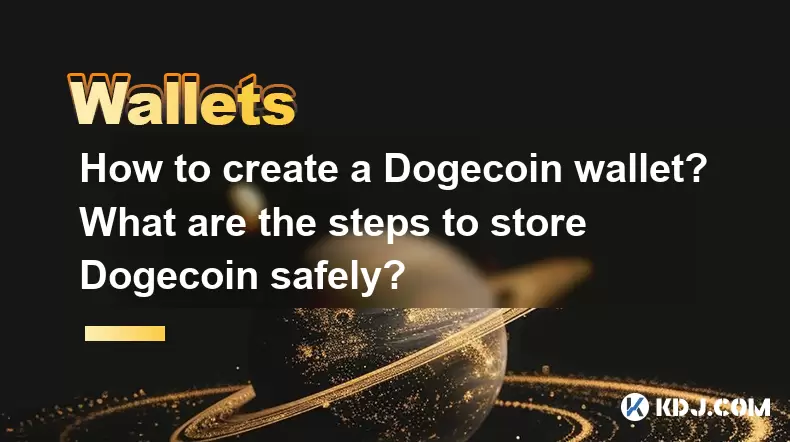
How to create a Dogecoin wallet? What are the steps to store Dogecoin safely?
May 09,2025 at 05:07pm
Creating a Dogecoin wallet and ensuring the safety of your Dogecoin are essential steps for anyone interested in participating in the cryptocurrency ecosystem. Dogecoin, originally created as a meme-inspired cryptocurrency, has gained significant traction and requires secure management to protect your investments. This article will guide you through the...
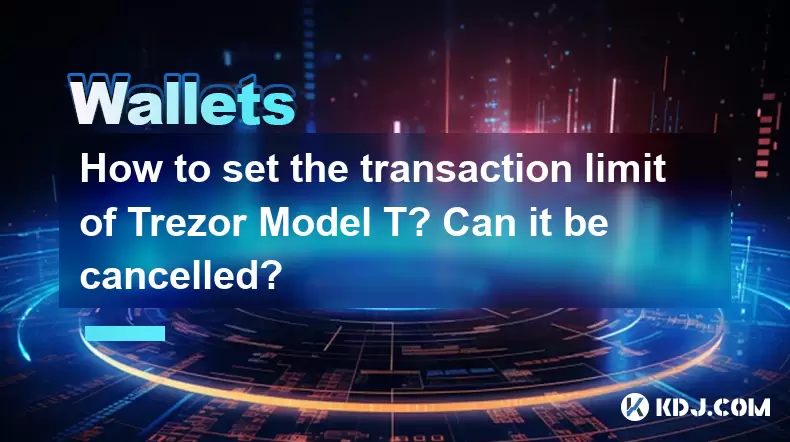
How to set the transaction limit of Trezor Model T? Can it be cancelled?
May 09,2025 at 10:35am
Setting the transaction limit on a Trezor Model T is an essential feature for users who want to enhance their security and manage their cryptocurrency transactions more effectively. This guide will walk you through the detailed steps to set a transaction limit on your Trezor Model T, as well as how to cancel it if needed. Understanding Transaction Limit...
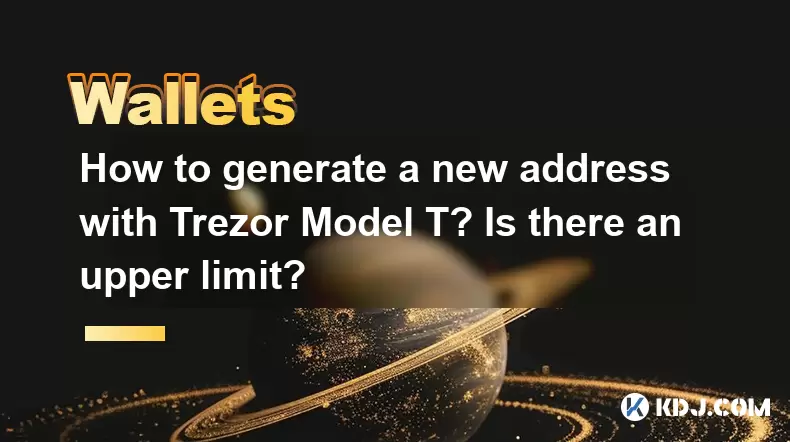
How to generate a new address with Trezor Model T? Is there an upper limit?
May 09,2025 at 07:36am
Introduction to Trezor Model TThe Trezor Model T is a highly respected hardware wallet in the cryptocurrency community, known for its robust security features and user-friendly interface. It supports a wide range of cryptocurrencies and allows users to manage their digital assets securely. One of the essential functions of any hardware wallet is the abi...
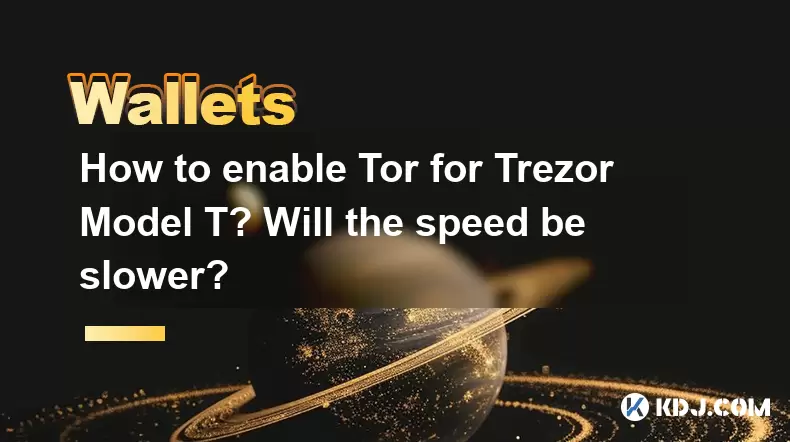
How to enable Tor for Trezor Model T? Will the speed be slower?
May 09,2025 at 05:14pm
Enabling Tor on your Trezor Model T provides an additional layer of privacy and security by routing your transactions through the Tor network. This guide will walk you through the process of enabling Tor on your Trezor Model T and discuss the potential impact on transaction speed. Preparing Your Trezor Model T for TorBefore you begin, ensure that your T...
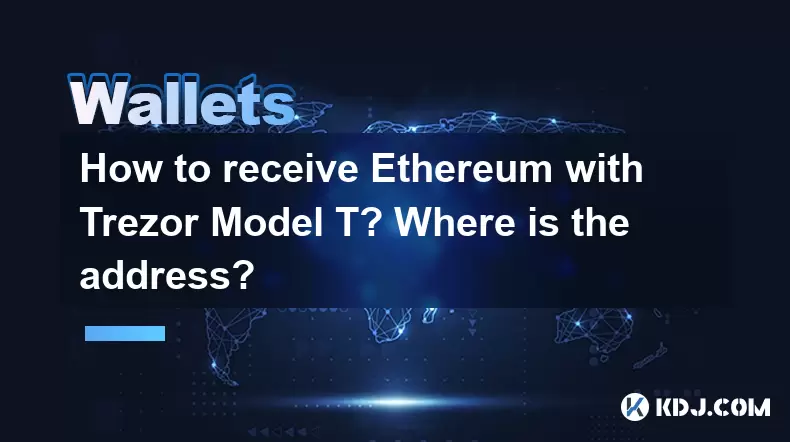
How to receive Ethereum with Trezor Model T? Where is the address?
May 09,2025 at 06:28am
Receiving Ethereum with a Trezor Model T involves a few straightforward steps that ensure your transactions are secure and your private keys are protected. The Trezor Model T is a popular hardware wallet that supports Ethereum and a variety of other cryptocurrencies. Let's explore how you can receive Ethereum on this device and locate your Ethereum addr...
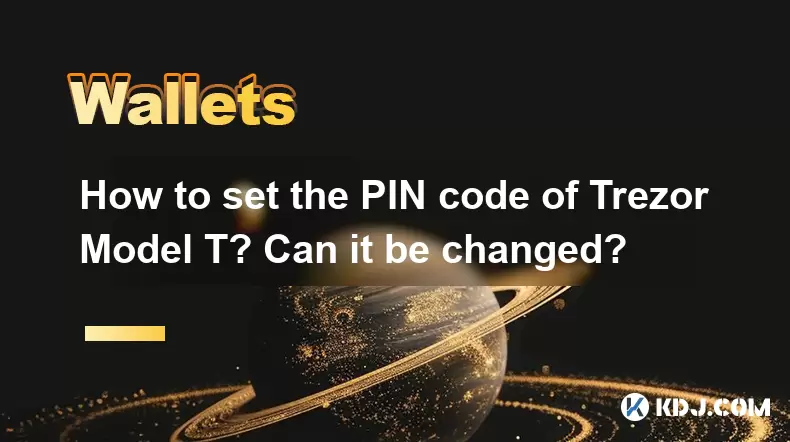
How to set the PIN code of Trezor Model T? Can it be changed?
May 09,2025 at 07:29am
Setting up and managing the PIN code on your Trezor Model T is an essential aspect of securing your cryptocurrency. The PIN code acts as a primary layer of security, ensuring that only you can access your funds. In this article, we will guide you through the process of setting up your initial PIN code and changing it if necessary. We will also discuss t...

How to create a Dogecoin wallet? What are the steps to store Dogecoin safely?
May 09,2025 at 05:07pm
Creating a Dogecoin wallet and ensuring the safety of your Dogecoin are essential steps for anyone interested in participating in the cryptocurrency ecosystem. Dogecoin, originally created as a meme-inspired cryptocurrency, has gained significant traction and requires secure management to protect your investments. This article will guide you through the...

How to set the transaction limit of Trezor Model T? Can it be cancelled?
May 09,2025 at 10:35am
Setting the transaction limit on a Trezor Model T is an essential feature for users who want to enhance their security and manage their cryptocurrency transactions more effectively. This guide will walk you through the detailed steps to set a transaction limit on your Trezor Model T, as well as how to cancel it if needed. Understanding Transaction Limit...

How to generate a new address with Trezor Model T? Is there an upper limit?
May 09,2025 at 07:36am
Introduction to Trezor Model TThe Trezor Model T is a highly respected hardware wallet in the cryptocurrency community, known for its robust security features and user-friendly interface. It supports a wide range of cryptocurrencies and allows users to manage their digital assets securely. One of the essential functions of any hardware wallet is the abi...

How to enable Tor for Trezor Model T? Will the speed be slower?
May 09,2025 at 05:14pm
Enabling Tor on your Trezor Model T provides an additional layer of privacy and security by routing your transactions through the Tor network. This guide will walk you through the process of enabling Tor on your Trezor Model T and discuss the potential impact on transaction speed. Preparing Your Trezor Model T for TorBefore you begin, ensure that your T...

How to receive Ethereum with Trezor Model T? Where is the address?
May 09,2025 at 06:28am
Receiving Ethereum with a Trezor Model T involves a few straightforward steps that ensure your transactions are secure and your private keys are protected. The Trezor Model T is a popular hardware wallet that supports Ethereum and a variety of other cryptocurrencies. Let's explore how you can receive Ethereum on this device and locate your Ethereum addr...

How to set the PIN code of Trezor Model T? Can it be changed?
May 09,2025 at 07:29am
Setting up and managing the PIN code on your Trezor Model T is an essential aspect of securing your cryptocurrency. The PIN code acts as a primary layer of security, ensuring that only you can access your funds. In this article, we will guide you through the process of setting up your initial PIN code and changing it if necessary. We will also discuss t...
See all articles






















































































